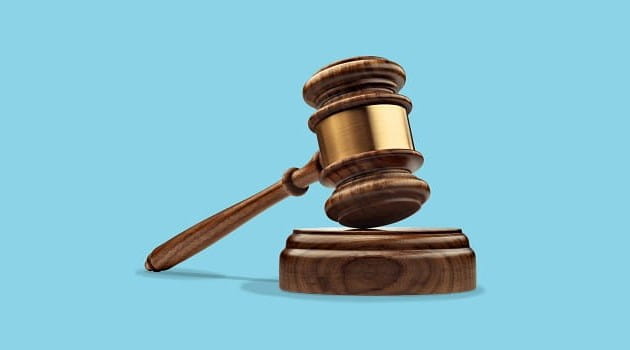Companies must harness the power of the ‘thinking board’ to boost their resilience, according to Aleen Gulvanessian, Consultant on Governance and Portfolio Career at Eversheds Sutherland.
Speaking at the recent ICAEW Corporate Governance Conference, she shared her view that the thinking board understands how to build strong communication with investors. As such, it prefers to explain why it cannot – or chooses not to – comply with a requirement rather than simply tick boxes in cases where compliance doesn’t make business sense.
Ashurst Risk Advisory Partner Nisha Sanghani goes further. For her, a thinking board would also encourage management to be as transparent as possible about the risk factors facing the company.
That approach would ensure that directors are fully equipped to understand risks and, in turn, discharge their responsibilities more effectively, recognising that ultimate accountability rests with them. As a result, the overall business would be more resilient to change and better able to withstand shocks.
Looking at the recently revised Corporate Governance Code, Sanghani explained that the changes focus on the outcome; the need to do an external, public-facing report on the effectiveness or otherwise of internal controls. This then triggers a defensive reaction from businesses.
“What we should be asking ourselves – and this is what I’d do as an ex-board director – is: ‘What mechanisms must I have in place to support that? What objectives am I trying to achieve?’ Well, I’m trying to achieve two things: better accountability in the boardroom and better transparency of information, from a management perspective, to me and the other board members.”
Acute factors
Sanghani stressed that a focus on transparency and resilience is not about “extracting all risk” from a company’s operations. Rather, she said: “Being more resilient means better management of risk. It means understanding the risks that your organisation faces, which of them are material, what controls you have in place to minimise or mitigate them and, in some cases, understanding which risks are to be accepted or pursued.”
It’s about having a better grasp of how all those risks interact, she explains. That includes geopolitics. Directors should think about the acute factors that will impact their business. “That’s absolutely key in this environment, where we talk about poly-crisis and organisations’ increasing risk profiles – both internally and externally.”
Sanghani pointed out that non-executive directors (NEDs) can’t be experts on everything. However, having a proper risk management framework gives you a clear view of all the risks your organisation faces, she explained. It highlights material risk and helps you understand how to prioritise your resources, where you might need to take action and what your information flow from management should look like. “All those things go towards executives and NEDs better managing and pre-empting risks and avoiding disorderly wind-downs.”
Crucially, she said, those tools would also enable a board to be more commercial because it can start to actively take risks that are healthy for the business. “You’re doing it on the basis of an internal framework, so in the context of a very safe reading,” she said. “The board fully understands what the implications might be.”
Material risks
As an example of a positive shift for corporate governance, Sanghani pointed out that the oil and gas industry realised a long time ago that a split between profit and accountability does not produce the best outcomes.
Oil and gas companies, she explained, built matrices, or organisational arrangements, to recognise that lots of different people run their internal processes and controls. But while those people are responsible, they are never accountable. Instead, that accountability resides at top level (ie, the boardroom) among those who must a) delegate and oversee that responsibility, and b) manage situations where things go wrong.
“I think we can learn a lot from that industry because that’s exactly what this is about,” Sanghani said. “I don’t think a board can say, ‘We’ve got an idea of our material risks and we think that’s okay’; I believe that boards must think strongly about the framework they have in place, plus understand what those material risks are and how they delegate and effectively oversee those responsibilities.”
Mitigating strategies
Turning to another valuable tool that boards can use to gauge the impact of potential risks, Mala Shah-Coulon, Team Lead, Governance and Public Policy, at EY UK, highlighted the benefits of reverse stress testing.
“When you stress test something, you say: ‘Well, if this particular combination of scenarios happens, how would I withstand that?’” she explained. “With reverse stress testing, a common misconception is that it’s about downside trading scenarios, for example asking how long a company could sustain a prolonged reduction in revenues, or even a shutdown, before it became illiquid or breached its covenants.”
In reality, a proper reverse stress test starts with the premise: I’m already in trouble, I’m no longer viable, the business model has broken. What are the factors that could have led me into this situation? “It really makes you think about the vulnerabilities in your operating model, business model and strategy,” she said.
For Shah-Coulon, boards must build a discipline and routine around taking time to properly consider scenarios that could lead their companies to become non-viable. “The point of this type of testing is not to say: well, actually, that set of circumstances will never happen to us. Instead, it’s about saying: ‘Yes, this is a low probability, but what are the mitigating strategies we have now? How do we need to adapt them? How do we need to make them more dynamic?’”
She pointed out that, under its long-trailed Resilience Statement, the government was looking to introduce a mandatory reverse stress test for public interest entities. “That’s now not going ahead,” she said. “But I don’t think we need to wait for regulation for that kind of discipline. We should just be doing it as good practice.”
The new boardroom agenda
Articles, videos and podcasts exploring the crucial role board members play in ensuring their organisation’s long-term sustainability amid complex risks.





